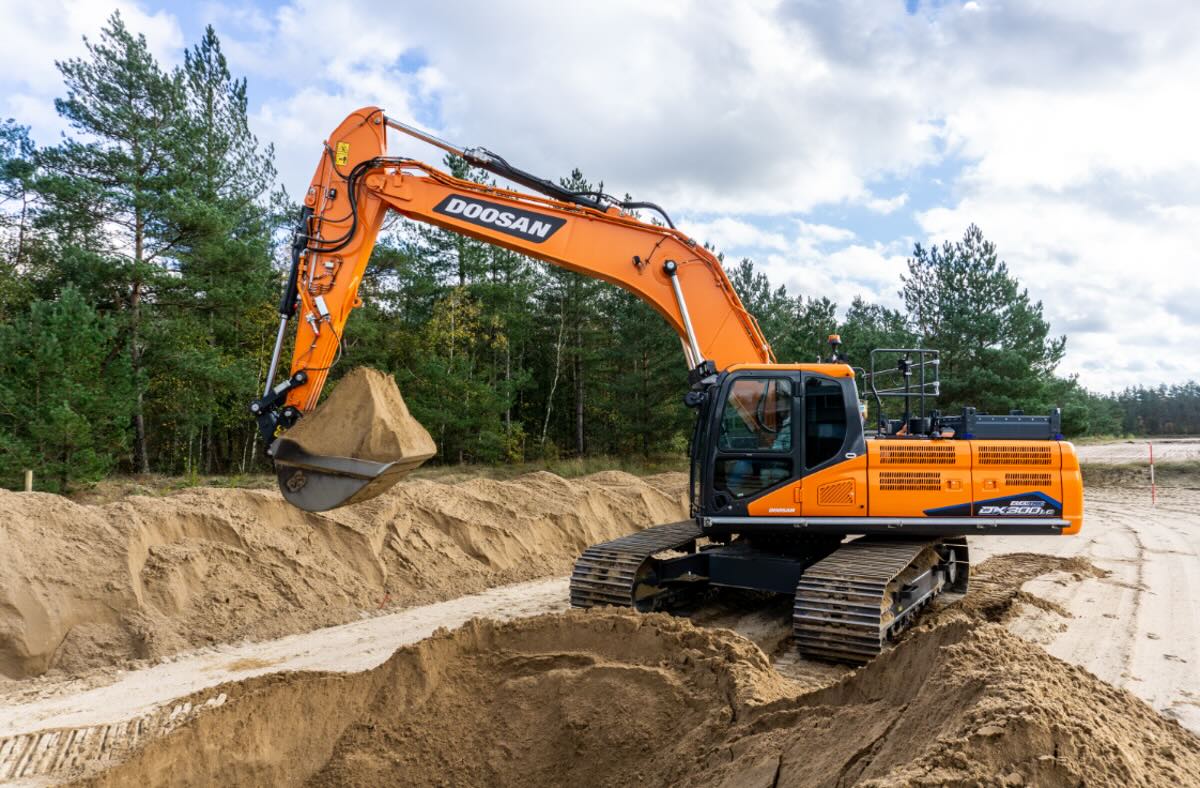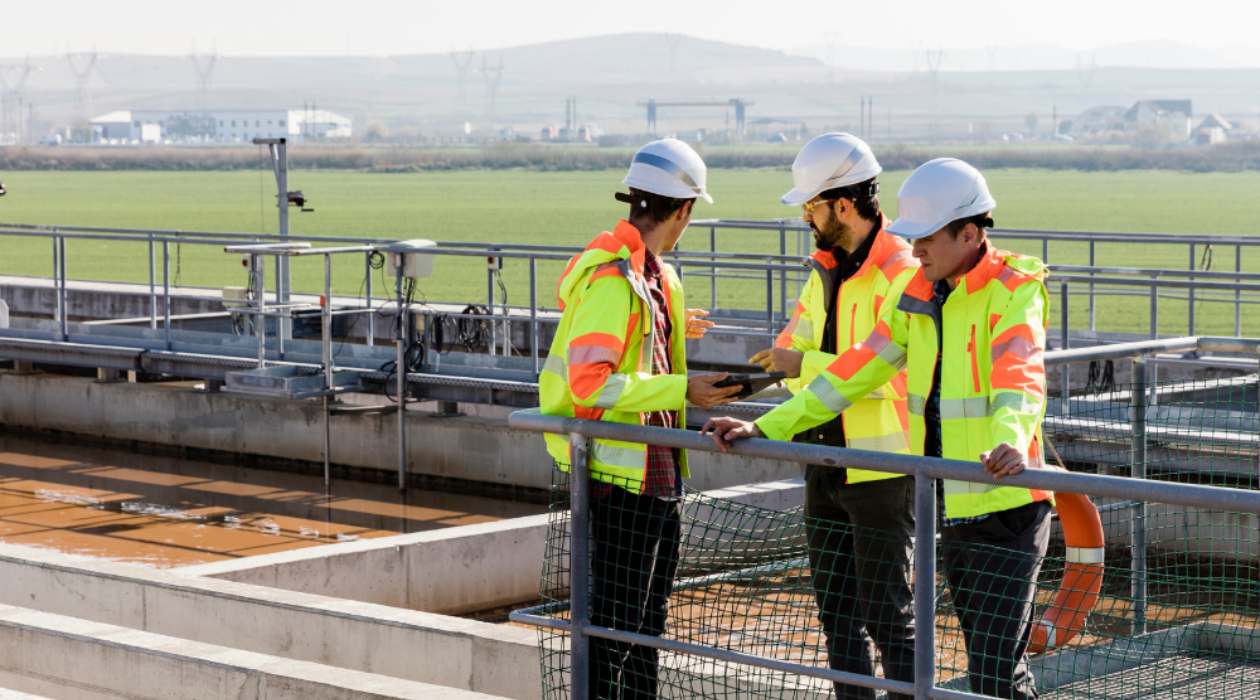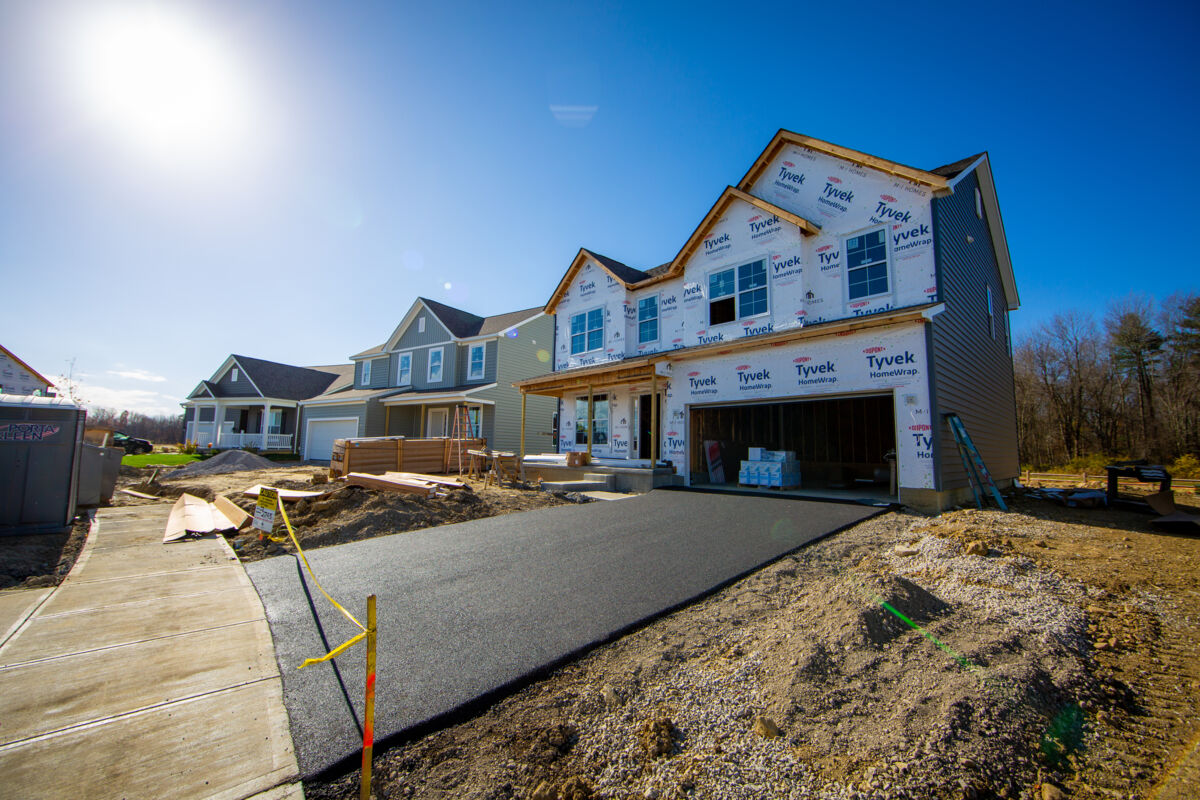Home>diy>Building & Construction>What Is Pe In Construction


Building & Construction
What Is Pe In Construction
Modified: May 6, 2024
Learn about the importance of PE in construction and how it impacts building-construction projects. Discover the key role and benefits of PE in ensuring structural integrity and safety.
(Many of the links in this article redirect to a specific reviewed product. Your purchase of these products through affiliate links helps to generate commission for Storables.com, at no extra cost. Learn more)
Introduction
Welcome to the world of construction, where architectural marvels take shape and dreams become reality! In the realm of building construction, a team of professionals with diverse expertise work together to ensure that projects are executed efficiently and safely. One vital member of this team is a Professional Engineer (PE). In this article, we will explore the role of PE in construction, their qualifications, responsibilities, and the importance of their presence in construction projects.
Before we delve into the specifics, let’s first understand what a PE is. A Professional Engineer is an individual who has obtained the necessary education, training, and certification to practice engineering within a specific jurisdiction. In the context of construction, a PE specializes in civil or structural engineering, ensuring that buildings and infrastructure are designed, built, and maintained in accordance with industry standards and regulations.
The significance of a PE in construction cannot be overstated. They play a crucial role in ensuring the safety, functionality, and quality of construction projects. Their expertise and attention to detail are instrumental in navigating the complex challenges and intricacies involved in building construction.
Types of PE in Construction:
There are various types of PE, each associated with a specific area of expertise within the construction industry. Some common types of PE include:
- Civil Engineer: Specializes in the design and construction of infrastructure projects such as roads, bridges, and dams.
- Structural Engineer: Focuses on the design, analysis, and construction of building structures to withstand the forces imposed on them.
- Geotechnical Engineer: Deals with soil mechanics, foundation design, and geotechnical investigations to ensure stability and durability of structures.
- Environmental Engineer: Concerned with minimizing the environmental impact of construction projects, including waste management and pollution control.
These are just a few examples, and depending on the specific requirements of a construction project, there may be other types of PEs involved as well.
Now that we have a general understanding of what a PE is and the various types involved in construction, let’s delve deeper into the importance of having a PE in construction projects.
Key Takeaways:
- Professional Engineers (PEs) are indispensable in construction, ensuring compliance with regulations, structural integrity, and optimized building performance. Their expertise and ethical conduct contribute to safe and successful construction projects.
- PEs face challenges in regulatory compliance, project management, and technological advancements. Despite these obstacles, their problem-solving skills and dedication bring numerous benefits to construction projects, including quality assurance, risk mitigation, and client confidence.
Read more: What Is Pre-Construction In Construction
Definition of PE in Construction
In the realm of construction, a Professional Engineer (PE) is an individual who possesses the expertise and qualifications to design, analyze, supervise, and approve engineering projects related to the construction industry. The role of a PE in construction is pivotal, as they ensure that buildings, infrastructure, and other structures are designed and constructed in compliance with safety codes, regulations, and industry standards.
A PE in construction is responsible for applying engineering principles and practices to ensure the structural integrity, stability, and safety of buildings and infrastructure. They utilize their knowledge of physics, mathematics, and materials science to design and analyze structures, assess potential risks, and implement necessary measures to mitigate those risks.
One of the primary tasks of a PE in construction is to create detailed engineering drawings, plans, and specifications for buildings and infrastructure projects. These documents outline the design, dimensions, materials, and construction methods to be used. They must be precise, accurate, and adhere to local building codes and regulations.
Furthermore, a PE collaborates with other professionals involved in the construction process, such as architects, contractors, and construction managers. They provide guidance and expertise during the planning, design, and construction phases of a project. Their input is crucial in ensuring that the project is executed efficiently, safely, and within budgetary constraints.
A PE in construction also performs inspections and quality control checks at various stages of construction to verify compliance with design plans and specifications. They assess the quality of materials, workmanship, and adherence to safety protocols. If any discrepancies or deficiencies are identified, the PE provides recommendations for corrective actions to ensure that the structure meets the required standards.
Moreover, a PE in construction must stay updated with the latest industry advancements, building codes, and regulations. They continuously engage in professional development activities and educational courses to enhance their knowledge and skills. This ensures that they are equipped to address emerging challenges and incorporate innovative engineering solutions into their projects.
In summary, a PE in construction is a highly trained and qualified professional who possesses the expertise to design, analyze, and supervise construction projects. Their role is essential in ensuring the safety, durability, and compliance of buildings and infrastructure. By leveraging their engineering knowledge and skills, they contribute to the successful completion of construction projects with optimal functional and structural performance.
Importance of PE in Construction
The presence of a Professional Engineer (PE) in construction projects is of utmost importance for several key reasons. They bring a unique set of skills, expertise, and knowledge to the table, ensuring that construction projects are executed with precision, safety, and adherence to regulations. Let’s explore the significance of having a PE in construction:
Compliance with Building Codes and Regulations: Building codes and regulations exist to ensure the safety and integrity of structures. A PE in construction is well-versed in these codes and regulations and ensures that the project complies with them. They play a crucial role in obtaining permits and approvals, meeting legal requirements, and minimizing potential risks.
Structural Integrity and Safety: The structural integrity and safety of buildings and infrastructure are paramount. A PE in construction is responsible for designing and analyzing structures, assessing potential risks, and implementing measures to ensure their safety. They consider various factors such as load capacities, environmental conditions, and material properties to create structurally sound designs.
Optimized Building Performance: A PE in construction focuses on optimizing the performance of buildings and infrastructure. They consider factors such as energy efficiency, sustainability, and functionality when designing structures. By incorporating innovative solutions and technologies, PEs strive to create buildings that are environmentally friendly, cost-effective, and provide optimal comfort for occupants.
Risk Mitigation: Construction projects involve inherent risks, and a PE plays a crucial role in identifying and mitigating these risks. They conduct thorough risk assessments, identify potential hazards, and develop strategies to minimize or eliminate them. This proactive approach helps ensure the safety of workers, the public, and the project itself.
Quality Assurance: PEs in construction perform inspections and quality control checks throughout the construction process. They ensure that materials, workmanship, and construction practices meet the required standards. By having a PE involved, the project can maintain a high level of quality and minimize the likelihood of costly rework or structural issues.
Interdisciplinary Collaboration: Construction projects involve multiple professionals from various disciplines. PEs act as a bridge between different stakeholders, including architects, contractors, and regulatory authorities. They facilitate effective communication, coordinate efforts, resolve conflicts, and ensure that all parties are working towards the common goal of a successful project.
Professional Judgment and Expertise: PEs are trained to exercise professional judgment and make informed decisions in complex situations. Their expertise allows them to evaluate different options, assess the feasibility of designs, and recommend the most appropriate solutions. This expertise helps navigate challenges that arise during construction, ensuring that projects stay on track.
The presence of a PE in construction brings peace of mind to all stakeholders involved, including clients, contractors, and regulatory bodies. Their knowledge, experience, and attention to detail instill confidence that construction projects are being executed to the highest standards. The result is a safer, more functional, and durable built environment.
Role of PE in Construction Projects
The role of a Professional Engineer (PE) in construction projects is multifaceted and encompasses various responsibilities and tasks. PEs bring their technical expertise, problem-solving abilities, and regulatory knowledge to ensure that construction projects are planned, designed, and executed successfully. Let’s explore the key roles that PEs play in construction projects:
Design and Engineering: PEs are responsible for creating the design and engineering plans for construction projects. They utilize their knowledge of structural and civil engineering principles to develop detailed drawings, specifications, and calculations. These plans outline the dimensions, materials, and construction methods to be used, ensuring compliance with building codes and regulations.
Risk Assessment and Mitigation: PEs assess potential risks and hazards associated with construction projects. They identify factors that may pose a threat to the project’s success, such as environmental conditions, structural integrity, or site-specific challenges. PEs develop strategies to mitigate these risks, implementing measures to ensure the safety of the workers, the public, and the structure itself.
Construction Oversight: PEs are actively involved in the construction phase of the project. They provide oversight and guidance to ensure that construction is carried out according to the design plans and specifications. PEs conduct regular inspections to monitor the quality of materials, workmanship, and compliance with safety standards. If any issues or deviations are found, they provide recommendations for corrective actions.
Collaboration and Coordination: PEs serve as a liaison between different stakeholders involved in the construction project. They collaborate with architects, contractors, and other engineers to ensure effective communication and seamless coordination. PEs ensure that all parties are working together towards the common goal of a successful project, addressing any conflicts or discrepancies that may arise during the construction process.
Regulatory Compliance: PEs have a deep understanding of local building codes, regulations, and industry standards. They ensure that the construction project complies with all applicable regulations and obtains the necessary permits and approvals. PEs navigate the complex regulatory landscape, ensuring that the project adheres to safety, zoning, and environmental requirements.
Problem Solving and Decision Making: PEs possess strong problem-solving skills and the ability to make informed decisions. They evaluate different options and alternatives, considering technical, economic, and practical factors. PEs analyze constraints, assess risks, and recommend the most suitable solutions to overcome challenges and ensure the successful completion of the project.
Quality Control and Assurance: PEs are responsible for maintaining high-quality standards throughout the construction process. They conduct inspections, quality control checks, and tests to ensure that materials and workmanship meet the required specifications. PEs prioritize quality assurance, aiming to minimize defects, errors, and rework, resulting in a structurally sound and durable final product.
Continuing Education and Professional Development: PEs are committed to lifelong learning and continuous improvement. They stay updated with the latest advancements in engineering, construction techniques, and industry best practices. PEs engage in ongoing professional development activities and maintain their licensure to ensure they are equipped with the latest knowledge and skills.
The role of a PE in construction projects is critical in ensuring the successful and safe execution of building projects. From design and engineering to construction oversight and regulatory compliance, PEs bring invaluable expertise that contributes to the quality, integrity, and longevity of construction projects.
PE Qualifications and Education
Becoming a Professional Engineer (PE) in the field of construction requires a combination of education, training, and experience. PEs undergo a rigorous process to ensure that they possess the necessary qualifications and expertise to practice engineering within a specific jurisdiction. Let’s explore the qualifications and education required to become a PE in construction:
Educational Requirements: The first step in becoming a PE is obtaining a bachelor’s degree in engineering from an accredited university or college. The degree program typically focuses on a specific engineering discipline such as civil engineering or structural engineering. The curriculum includes a range of courses covering mathematics, physics, materials science, and specialized areas of engineering related to construction.
Engineering Licensure: After obtaining a degree, aspiring PEs must fulfill the requirements for licensure as determined by the regulatory body in their jurisdiction. This typically involves passing the Fundamentals of Engineering (FE) exam, which tests the fundamental knowledge and understanding of engineering principles. Upon successful completion of the FE exam, individuals become eligible to work as engineers-in-training (EITs) or engineers-in-residence (EIRs) under the supervision of licensed PEs.
Professional Experience: To become a fully licensed PE, individuals must accumulate a certain amount of professional experience. The exact requirement varies by jurisdiction, but it typically ranges from 3 to 5 years of relevant work experience. During this time, engineers work under the supervision of licensed PEs and gain practical experience in various aspects of construction projects, including design, analysis, construction oversight, and project management.
Principles and Practice of Engineering (PE) Exam: After fulfilling the educational and experience requirements, aspiring PEs must pass the Principles and Practice of Engineering (PE) exam. This exam evaluates the candidate’s competency in their specific engineering discipline, such as civil or structural engineering. The exam assesses the ability to apply engineering principles to real-world scenarios and covers topics relevant to construction projects, including design, construction management, and ethics.
Continuing Education: Upon obtaining a PE license, individuals are required to participate in continuing education activities to maintain and renew their license. Continuing education ensures that PEs stay updated with the latest industry advancements, building codes, and regulations. This can include attending conferences, workshops, seminars, and taking relevant courses that contribute to their professional development and knowledge enhancement.
Specializations and Certifications: PEs in construction can further specialize in specific areas of expertise. They can pursue additional certifications or training in specialized fields such as structural engineering, geotechnical engineering, or environmental engineering. These specialized certifications demonstrate a PE’s expertise and proficiency in a particular area, further enhancing their qualifications in the construction industry.
It is important to note that the specific requirements for becoming a PE may vary by jurisdiction. It is essential to research and understand the licensing requirements in your specific region to ensure compliance with local regulations.
In summary, becoming a PE in construction requires a bachelor’s degree in engineering, passing the FE exam, accumulating relevant work experience, and successfully completing the PE exam. Continued education and specialized training further enhance a PE’s qualifications and expertise in the field. By obtaining a PE license, engineers demonstrate their commitment to professionalism, competency, and adherence to ethical standards in the construction industry.
Read more: What Is Construction
PE Code of Ethics in Construction
Professional Engineers (PEs) in the field of construction adhere to a strict code of ethics that guides their professional conduct. The code of ethics outlines the principles and standards that PEs must follow to ensure integrity, professionalism, and the welfare of the public. Let’s explore the key elements of the PE code of ethics in construction:
Commitment to Public Safety and Welfare: PEs have a primary responsibility to protect the safety, health, and welfare of the public. They ensure that their professional activities prioritize public safety over any other considerations. PEs strive to design and construct structures that withstand forces imposed upon them, minimize risks, and comply with the applicable building codes and regulations.
Integrity and Honesty: PEs must exhibit integrity and honesty in all aspects of their professional practice. They are expected to present information truthfully, accurately, and without misrepresentation. PEs are committed to maintaining the highest ethical standards and avoiding conflicts of interest that could compromise their professional judgment.
Competence and Continuous Professional Development: PEs are dedicated to maintaining and enhancing their technical competence throughout their careers. They stay updated with the latest advancements in engineering, construction practices, and emerging technologies. PEs engage in ongoing professional development activities to ensure that their knowledge and skills are current and relevant.
Respect for Clients and Colleagues: PEs treat their clients, colleagues, and other professionals with respect, courtesy, and fairness. They collaborate with others in a constructive manner, recognizing the value of diverse perspectives and contributions. PEs maintain confidentiality and safeguard the interests of their clients and the public, ensuring that sensitive information is protected.
Environmental Stewardship and Sustainability: PEs promote sustainable and environmentally responsible engineering practices. They consider the environmental impact of construction projects and strive to minimize negative effects on ecosystems, resources, and communities. PEs encourage the use of eco-friendly materials, energy-efficient designs, and sustainable construction techniques.
Ethical Decision Making: PEs are expected to make ethical decisions based on sound professional judgment. They consider technical, economic, social, and environmental factors when evaluating alternatives and risks. PEs prioritize the public interest and communicate the potential impact of their decisions to clients, colleagues, and stakeholders.
Professional Relationships: PEs maintain professional relationships with clients, colleagues, and other stakeholders based on trust, fairness, and mutual respect. They offer objective and unbiased advice, valuing the interests of their clients and the public. PEs avoid any actions or behaviors that could compromise their professional integrity or reputation.
Commitment to Ethical Obligations: PEs are committed to upholding the code of ethics and reporting any violations observed or experienced. They promote ethical behavior within the profession and encourage other engineers to adhere to the highest standards of professional conduct. PEs take responsibility for their actions and engage in self-regulation to maintain the integrity of the engineering profession.
The PE code of ethics in construction serves as a guiding framework for PEs, ensuring that they conduct themselves with professionalism, integrity, and social responsibility. By adhering to these ethical principles, PEs maintain public trust and confidence, contributing to the advancement and sustainability of the construction industry.
When working in construction, always ensure that proper personal protective equipment (PPE) is worn to prevent injuries. This includes hard hats, safety glasses, gloves, and steel-toed boots.
PE Licensing and Certification
Licensing and certification are essential aspects of becoming a Professional Engineer (PE) in the construction industry. These credentials validate an engineer’s qualifications, expertise, and ability to practice engineering within a specific jurisdiction. Let’s explore the process of obtaining a PE license and the significance of certification in the field of construction:
PE Licensing: The process of obtaining a PE license involves several steps, including education, experience, and examination requirements. The specific licensing process may vary by jurisdiction, but the general steps are as follows:
- Educational Requirements: Aspiring PEs must hold a bachelor’s degree in engineering from an accredited institution. The degree program should be specific to the engineering discipline relevant to the construction field, such as civil or structural engineering.
- Work Experience: Most jurisdictions require individuals to gain a certain amount of professional experience before becoming eligible for a PE license. This typically ranges from 3 to 5 years of relevant work experience, working under the supervision of a licensed PE.
- FE Exam: The Fundamentals of Engineering (FE) exam is the first step towards becoming a PE. It assesses an engineer’s fundamental engineering knowledge and understanding. Successful completion of the FE exam is a prerequisite for the next stages of the licensing process.
- PE Exam: After fulfilling the educational and experience requirements, aspiring PEs must pass the Principles and Practice of Engineering (PE) exam. This exam evaluates an engineer’s competency in their specific discipline, such as civil or structural engineering. The PE exam tests the application of engineering principles to real-world scenarios, including construction projects.
- Application and Review: Once an engineer has passed the PE exam, they can submit an application to the licensing board in their jurisdiction. The application typically includes details of education, experience, exam scores, and references. The licensing board reviews the application and verifies the engineer’s qualifications.
- Licensing: Upon approval of the application, the engineer is granted a PE license, allowing them to legally practice engineering within the jurisdiction. This license signifies that the engineer has met the requirements for education, experience, and competency in their specific engineering discipline.
Specialized Certifications: In addition to licensing, specialized certifications can further enhance a PE’s qualifications and expertise in the field of construction. These certifications are offered by professional organizations and demonstrate a PE’s specialized knowledge and proficiency in specific areas, such as structural engineering, geotechnical engineering, or project management. Examples of specialized certifications for construction PEs include the SE (Structural Engineer) or PMP (Project Management Professional) certifications.
Licensing and certification in the field of construction are significant for both individuals and the industry as a whole. They provide assurance to clients, employers, and regulatory bodies that an engineer possesses the necessary qualifications and competency to undertake construction projects. These credentials signify a commitment to professionalism, ethical conduct, and adherence to industry standards and regulations.
It is important for aspiring PEs to research and understand the specific licensing requirements and processes in the jurisdiction they wish to practice engineering. Each jurisdiction may have variations in requirements, examinations, and application procedures. By fulfilling the licensing and certification requirements, PEs demonstrate their dedication to the engineering profession and their commitment to ensuring the safety, integrity, and excellence of construction projects.
PE Responsibilities in Construction Projects
A Professional Engineer (PE) in the field of construction holds a significant level of responsibility in ensuring the success and safety of construction projects. PEs bring their technical expertise, knowledge of engineering principles, and adherence to codes and regulations to fulfill their responsibilities. Let’s explore the key responsibilities that PEs have in construction projects:
Design and Planning: PEs are responsible for the design and planning of construction projects. They analyze project requirements, consider various factors such as structural integrity, functionality, and environmental impact, and create detailed engineering drawings, plans, and specifications. PEs ensure that the design is safe, compliant with all applicable codes and regulations, and meets the specific needs and objectives of the project.
Structural Analysis and Engineering: PEs perform structural analysis to assess the stability and integrity of building structures. They utilize mathematical calculations, physics principles, and engineering software to ensure that the structures can withstand the forces and loads imposed upon them. PEs determine suitable materials, building techniques, and construction methods to achieve the desired structural performance.
Construction Oversight: PEs play a crucial role in overseeing the construction process. They inspect construction sites to ensure compliance with design plans, specifications, and safety standards. PEs monitor the quality of materials, workmanship, and construction practices, making sure that they align with the approved design and meet industry standards. They provide guidance and make decisions during construction to address any issues or unforeseen circumstances that arise. PEs also collaborate with contractors, subcontractors, and other professionals involved in the construction process.
Quality Control and Assurance: PEs implement quality control measures to ensure that construction projects meet specified standards. They conduct inspections and tests at different stages of construction to verify the quality of materials, workmanship, and compliance with design plans. PEs assess performance, identify any deficiencies or deviations, and provide recommendations for corrective actions. By maintaining high-quality standards, PEs contribute to the delivery of a safe, durable, and well-built structure.
Code and Regulatory Compliance: PEs have a profound understanding of building codes, regulations, and industry standards. They ensure that construction projects adhere to all applicable codes and regulations, including safety, zoning, and environmental requirements. PEs obtain necessary permits and approvals, prepare documentation, and engage with regulatory authorities to ensure compliance throughout the construction process.
Risk Assessment and Mitigation: PEs assess potential risks and hazards associated with construction projects. They identify factors that may pose a threat to the project’s success, such as structural integrity, site-specific challenges, or environmental conditions. PEs develop strategies and implement measures to mitigate these risks, ensuring the safety of workers, the public, and the integrity of the structure.
Documentation and Reporting: PEs maintain accurate and comprehensive documentation throughout the project. They keep records of design plans, specifications, inspection reports, and correspondence. PEs prepare and submit regular progress reports, ensuring that all stakeholders are informed about the project’s status. They also provide documentation for post-construction purposes, including as-built drawings and final reports.
Continuing Education and Professional Development: PEs are committed to continuous learning and professional development. They stay updated with the latest advancements in engineering, construction techniques, and industry best practices. PEs engage in ongoing education, attend seminars, conferences, and workshops to enhance their knowledge and skills. By staying up-to-date, PEs are equipped to tackle emerging challenges and apply innovative solutions in their construction projects.
The responsibilities of a PE in construction are vast and diverse. By fulfilling these responsibilities, PEs contribute to the successful completion of construction projects that meet high standards of safety, functionality, and quality. Their expertise, attention to detail, and commitment to professional ethics are integral to ensuring the overall success and integrity of the construction industry.
Challenges Faced by PE in Construction
Being a Professional Engineer (PE) in the field of construction comes with its fair share of challenges. PEs face various obstacles in their roles, which require them to navigate complex situations, manage risks, and balance competing priorities. Let’s explore some of the common challenges faced by PEs in construction:
Regulatory Compliance: Keeping up with ever-changing building codes, regulations, and permitting requirements can be challenging for PEs. Staying informed about the latest updates, ensuring compliance, and obtaining necessary permits can be time-consuming and demanding. PEs must navigate the complexities of the regulatory landscape to ensure that construction projects are executed in accordance with all applicable requirements.
Budget and Schedule Constraints: Construction projects often have tight budgets and deadlines. PEs face the challenge of designing and planning projects that meet these constraints while still maintaining safety, quality, and functionality. They must balance the need to deliver a project on time and within budget with the need to adhere to engineering principles and standards.
Collaboration and Communication: PEs work as part of multidisciplinary project teams, collaborating with architects, contractors, and other stakeholders. Effective communication and coordination among team members are crucial for successful project outcomes. PEs may face challenges in aligning different perspectives, solving conflicts, and ensuring that all team members are working towards the common goal of a safe and well-executed construction project.
Managing Risks and Uncertainties: Every construction project involves inherent risks and uncertainties. PEs must identify, assess, and manage these risks effectively. They need to anticipate challenges, develop contingency plans, and implement risk mitigation strategies. From unforeseen site conditions to unexpected weather events, PEs must be prepared to handle unforeseen circumstances that can impact the project’s timeline, budget, and safety.
Technological Advancements: The construction industry is witnessing rapid technological advancements and the adoption of innovative tools and techniques. PEs face the challenge of keeping up with these advancements and incorporating them into their projects. They must stay informed about technologies such as Building Information Modeling (BIM), advanced analysis software, and sustainable construction practices to ensure they are utilizing the most appropriate and efficient methods.
Managing Project Complexity: Construction projects can be complex, especially large-scale infrastructure projects or those involving unique designs. PEs need to navigate through intricate project requirements, intricate designs, challenging site conditions, and coordination with multiple stakeholders. They must ensure that the project meets all technical, functional, and regulatory requirements while maintaining efficient project management practices.
Work-Life Balance: PEs in construction often face demanding work schedules and tight deadlines. Balancing work commitments with personal and family life can be a significant challenge. PEs must manage their time effectively, prioritize tasks, and seek support from their team to maintain a healthy work-life balance.
Despite these challenges, PEs play a vital role in the construction industry. Their expertise, problem-solving abilities, and commitment to ensuring safe and successful construction projects help overcome these obstacles and contribute to the advancement of the built environment.
Benefits of Having a PE in Construction
The presence of a Professional Engineer (PE) in construction projects offers numerous benefits and advantages. PEs bring a unique set of skills, expertise, and knowledge to the table, ensuring the successful execution of construction projects. Let’s explore the key benefits of having a PE in construction:
Design and Engineering Expertise: PEs possess advanced knowledge of engineering principles and practices. Their expertise allows them to create innovative and efficient designs, ensuring the structural integrity, functionality, and safety of construction projects. PEs employ their technical skills to solve complex engineering problems and optimize project performance.
Regulatory Compliance: PEs have a deep understanding of building codes, regulations, and industry standards. They ensure that construction projects comply with all applicable codes and regulations, including safety, zoning, and environmental requirements. PEs obtain necessary permits and approvals, reducing the risk of legal issues and project delays.
Quality Assurance: PEs play a crucial role in maintaining high-quality standards throughout the construction process. They conduct inspections, quality control checks, and tests to ensure that materials, workmanship, and construction practices meet the required specifications. PEs prioritize quality assurance, resulting in a well-built structure with minimized defects and improved durability.
Risk Mitigation: PEs assess potential risks and hazards associated with construction projects. They identify factors that may pose a threat to the project’s success and implement measures to mitigate those risks. PEs ensure that construction projects are designed and executed with safety as a top priority, reducing the likelihood of accidents, structural failures, or costly rework.
Technical Problem Solving: PEs possess strong problem-solving skills honed through their education and experience in the field of engineering. They tackle complex challenges that arise during the construction process, applying critical thinking and analysis to develop practical solutions. PEs find innovative ways to overcome obstacles and ensure the successful completion of construction projects.
Efficient Project Management: PEs contribute to effective project management by providing technical expertise and guidance. They collaborate with architects, contractors, and other professionals involved in the project to ensure seamless coordination and communication. PEs help manage resources, timelines, and budgets, ensuring that projects are delivered on time and within budgetary constraints.
Client Confidence and Trust: The presence of a PE in construction projects instills confidence and trust in clients, stakeholders, and regulatory authorities. PEs’ professional qualifications, ethical standards, and adherence to industry best practices demonstrate their commitment to delivering safe and high-quality construction projects. Clients can rely on PEs’ expertise and knowledge to ensure the successful completion of their projects.
Continued Professional Development: PEs engage in continuous learning and professional development, staying updated with the latest advancements in engineering and construction practices. Their ongoing education and training enable them to incorporate innovative technologies and sustainable practices into their projects, ensuring that construction projects are at the forefront of industry standards and practices.
Long-Term Investment Protection: By having a PE involved in construction projects, clients can be confident in the longevity and durability of their structures. PEs prioritize safety, quality, and sustainable design, reducing the risk of future maintenance issues or structural failures. This protects the client’s investment by ensuring that the constructed facility will serve its purpose for years to come.
These are just a few of the many benefits of having a PE in construction projects. The expertise, knowledge, and dedication of PEs contribute to the successful execution of construction projects, ultimately creating safe, high-quality, and functional structures.
Conclusion
In the world of construction, Professional Engineers (PEs) play a vital role in ensuring the success, safety, and integrity of building projects. PEs bring their technical expertise, problem-solving skills, and adherence to codes and regulations to every construction endeavor. Throughout this article, we have explored the various aspects of a PE’s role in construction, their qualifications, responsibilities, and the importance of their presence in construction projects.
We began by defining what a PE is and understanding the types of PEs that exist in the construction industry. We then explored the importance of having a PE in construction projects, noting their significant contributions to compliance with building codes, structural integrity, optimized building performance, risk mitigation, and quality assurance.
The qualifications and education required to become a PE were discussed, emphasizing the necessity of obtaining a bachelor’s degree in engineering, fulfilling specific work experience requirements, and successfully passing both the Fundamentals of Engineering (FE) and Principles and Practice of Engineering (PE) exams. The importance of continuing education and specialized certifications in enhancing a PE’s qualifications in the construction industry was also highlighted.
The article further examined the PE code of ethics in construction, emphasizing the commitment to public safety, integrity, competence, and professional relationships that PEs must adhere to. The code of ethics ensures that PEs maintain professionalism, trust, and ethical conduct in all their interactions and decision-making processes.
We then delved into the responsibilities of PEs in construction projects, emphasizing their roles in design and engineering, construction oversight, quality control, regulatory compliance, risk assessment, and documentation. PEs were depicted as professionals who confidently address complex challenges, manage risks, and uphold the highest standards of professionalism and ethical conduct.
The article also acknowledged the challenges faced by PEs in the construction industry, such as regulatory compliance, budget and schedule constraints, collaboration and communication, managing risks and uncertainties, technological advancements, project complexity, and work-life balance. Despite these challenges, PEs’ expertise and dedication enable them to overcome obstacles and contribute to the successful delivery of construction projects.
Lastly, we explored the benefits of having a PE in construction projects, highlighting their design and engineering expertise, regulatory compliance, quality assurance, risk mitigation, technical problem-solving capabilities, efficient project management, client confidence and trust, continued professional development, and long-term investment protection.
In conclusion, the role of a PE in construction is indispensable. PEs bring technical knowledge, regulatory compliance, and a commitment to professionalism and ethics to the construction industry. They ensure the safety, quality, and success of construction projects, making them an invaluable asset in shaping the built environment. The contribution of PEs in construction projects cannot be overstated, and their expertise continues to shape the ever-evolving landscape of the construction industry.
Curious about how safety measures profoundly impact construction sites? Our next read highlights why prioritizing construction safety not only prevents accidents but also fosters a secure environment for every worker involved. Dive into the specifics of effective safety protocols and understand their critical role in every builder's agenda.
Frequently Asked Questions about What Is Pe In Construction
Was this page helpful?
At Storables.com, we guarantee accurate and reliable information. Our content, validated by Expert Board Contributors, is crafted following stringent Editorial Policies. We're committed to providing you with well-researched, expert-backed insights for all your informational needs.














0 thoughts on “What Is Pe In Construction”